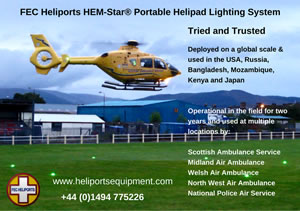GKN Aerospace2009-06-12 09:13:26
GKN Aerospace engineers drive technologies forward, achieving performance results across aerostructures and aero-engines.
Come and see GKN Aerospace at the Paris Air Show '09.
On a number of fronts, engineers at GKN Aerospace are pushing forward the boundaries of current technology - achieving results now and opening new avenues for tomorrow in the drive to develop ever quieter, more fuel-efficient and lower maintenance aircraft.
The Company is in the final stage of developing one piece acoustic engine and inlet liners which have already demonstrated 4db noise level reductions and promise to be 40percent lighter than current liners. This honeycomb technology is ready to go into production in its current form with further development already underway, as Phil Grainger, Senior Technical Director and Chief Technologist at GKN Aerospace, explains:
"Installed today, this is a development that offers the operator real performance improvements and significant noise reduction. And it is a technology we are still evolving, moving towards a future product with fully versatile honeycomb layers that are constructed on a cell by cell basis to give the optimum solution for each application and to maximise noise reduction."
In the aero-engine, the aircraft wing and rotor-blade, the Company's embedded electro-thermal ice protection technology is reducing weight, enhancing performance and improving safety. This equipment will fly within the flying surfaces on the wings of the Boeing 787 during trials later this year. These anti-ice systems are a key future market for GKN Aerospace and the Company continues to advance the technology in a number of directions, largely through involvement on the 'Integrated Wing' (IW) and 'Next Generation Composite Wing' (NGCW) research programmes. Miniaturisation of the control system is a major goal, offering the pilot individual, finely tuned ice protection directly to each slat. This increase in system control will bring fuel savings, improved performance and greater aircraft safety. The Company is also investigating using thinner coatings in the construction of the heater mats to further reduce the weight of this already extremely lightweight system.
In its aerostructures business, GKN Aerospace is investing in new robotic technology, in particular at its new Filton, UK, operation. Later this year the Company's newly equipped satellite site to GKN Aerospace-Filton will commence work on the manufacture and assembly of the rear wing spar and trailing edge for the A350XWB. This new manufacturing and assembly operation will house manufacturing 'cells' in which the production item will remain static whilst multi-taskable robotic heads move over the structure, completing all the required tasks.
Grainger continues: "Using robotic technology offers us speed, consistency and, crucially, flexibility. With this choice we are avoid investing heavily in costly plant that is dedicated to the manufacture of single item. Instead our capital equipment has 'cartridge like' functioning heads that can be re-formatted for new tasks as we require. The quality of consistent, high rate production this technology offers, with this level of adaptability, would just not have been achievable in the recent past."
Come and see GKN Aerospace at the Paris Air Show '09.
On a number of fronts, engineers at GKN Aerospace are pushing forward the boundaries of current technology - achieving results now and opening new avenues for tomorrow in the drive to develop ever quieter, more fuel-efficient and lower maintenance aircraft.
The Company is in the final stage of developing one piece acoustic engine and inlet liners which have already demonstrated 4db noise level reductions and promise to be 40percent lighter than current liners. This honeycomb technology is ready to go into production in its current form with further development already underway, as Phil Grainger, Senior Technical Director and Chief Technologist at GKN Aerospace, explains:
"Installed today, this is a development that offers the operator real performance improvements and significant noise reduction. And it is a technology we are still evolving, moving towards a future product with fully versatile honeycomb layers that are constructed on a cell by cell basis to give the optimum solution for each application and to maximise noise reduction."
In the aero-engine, the aircraft wing and rotor-blade, the Company's embedded electro-thermal ice protection technology is reducing weight, enhancing performance and improving safety. This equipment will fly within the flying surfaces on the wings of the Boeing 787 during trials later this year. These anti-ice systems are a key future market for GKN Aerospace and the Company continues to advance the technology in a number of directions, largely through involvement on the 'Integrated Wing' (IW) and 'Next Generation Composite Wing' (NGCW) research programmes. Miniaturisation of the control system is a major goal, offering the pilot individual, finely tuned ice protection directly to each slat. This increase in system control will bring fuel savings, improved performance and greater aircraft safety. The Company is also investigating using thinner coatings in the construction of the heater mats to further reduce the weight of this already extremely lightweight system.
In its aerostructures business, GKN Aerospace is investing in new robotic technology, in particular at its new Filton, UK, operation. Later this year the Company's newly equipped satellite site to GKN Aerospace-Filton will commence work on the manufacture and assembly of the rear wing spar and trailing edge for the A350XWB. This new manufacturing and assembly operation will house manufacturing 'cells' in which the production item will remain static whilst multi-taskable robotic heads move over the structure, completing all the required tasks.
Grainger continues: "Using robotic technology offers us speed, consistency and, crucially, flexibility. With this choice we are avoid investing heavily in costly plant that is dedicated to the manufacture of single item. Instead our capital equipment has 'cartridge like' functioning heads that can be re-formatted for new tasks as we require. The quality of consistent, high rate production this technology offers, with this level of adaptability, would just not have been achievable in the recent past."
For more information contact:
Ferry Rd
East Cowes
Isle of Wight
PO32 6RA
United Kingdom
Tel: +44 (0)1983 283649
